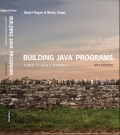
Concept explainers
Explanation of Solution
Program code:
Main.java
//import the required packages
import java.io.File;
import java.util.Arrays;
import java.util.Scanner;
//define a class inputStats
public class Main
{
//define the main
public static void main(String[] args) throws Exception
{
//create the object of File class
File fileName = new File("file.txt");
//create the object of Scanner class to refer the file
Scanner in = new Scanner(fileName);
//call the method plusScores()
plusScores(in);
}
//define a method plusScores()
public static void plusScores(Scanner in)
{
//iterate a while loop
while(in.hasNextLine())
{
//declare two string variables to get the lines
String name = in.nextLine();
String score = in.nextLine();
//declare the integer variables
int n=0;
int p=0;
//iterate a for loop to get the count
for (int i=0; i<score.length(); i++)
{
//if the character is +
if(score.charAt(i) == '+')
{
//increment the value of p by 1
p++;
}
//increment the value of n by n
n++;
}
//print the percentage
System.out.printf("%s: %.1f%% plus\n", name, 100.0*p/n);
}
}
}
carroll.txt
Kane, Erica
--+-+
Chandler, Adam
++-+
Martin, Jake
+++++++
Dillon, Amanda
++-++-+-
Explanation:
The above snippet of code is used to create a method called “plusScores()” that accepts a Scanner representing an input file containing a series of lines that represent student records...
Want to see the full answer?
Check out a sample textbook solution
Chapter 6 Solutions
EBK BUILDING JAVA PROGRAMS
- Please solve and answer the questions correctly please. Thank you!!arrow_forwardConsidering the TM example of binary sum ( see attached)do the step-by-step of execution for the binary numbers 1101 and 11. Feel free to use the Formal Language Editor Tool to execute it; Write it down the current state of the tape (including the head position) and indicate the current state of the TM at each step.arrow_forwardI need help on inculding additonal code where I can can do the opposite code of MatLab, where the function of t that I enter becomes the result of F(t), in other words, turning the time-domain f(t) into the frequency-domain function F(s):arrow_forward
 Database System ConceptsComputer ScienceISBN:9780078022159Author:Abraham Silberschatz Professor, Henry F. Korth, S. SudarshanPublisher:McGraw-Hill Education
Database System ConceptsComputer ScienceISBN:9780078022159Author:Abraham Silberschatz Professor, Henry F. Korth, S. SudarshanPublisher:McGraw-Hill Education Starting Out with Python (4th Edition)Computer ScienceISBN:9780134444321Author:Tony GaddisPublisher:PEARSON
Starting Out with Python (4th Edition)Computer ScienceISBN:9780134444321Author:Tony GaddisPublisher:PEARSON Digital Fundamentals (11th Edition)Computer ScienceISBN:9780132737968Author:Thomas L. FloydPublisher:PEARSON
Digital Fundamentals (11th Edition)Computer ScienceISBN:9780132737968Author:Thomas L. FloydPublisher:PEARSON C How to Program (8th Edition)Computer ScienceISBN:9780133976892Author:Paul J. Deitel, Harvey DeitelPublisher:PEARSON
C How to Program (8th Edition)Computer ScienceISBN:9780133976892Author:Paul J. Deitel, Harvey DeitelPublisher:PEARSON Database Systems: Design, Implementation, & Manag...Computer ScienceISBN:9781337627900Author:Carlos Coronel, Steven MorrisPublisher:Cengage Learning
Database Systems: Design, Implementation, & Manag...Computer ScienceISBN:9781337627900Author:Carlos Coronel, Steven MorrisPublisher:Cengage Learning Programmable Logic ControllersComputer ScienceISBN:9780073373843Author:Frank D. PetruzellaPublisher:McGraw-Hill Education
Programmable Logic ControllersComputer ScienceISBN:9780073373843Author:Frank D. PetruzellaPublisher:McGraw-Hill Education





